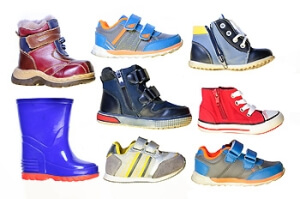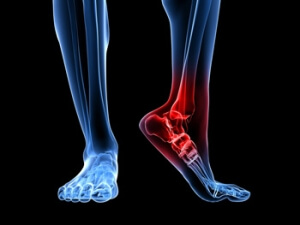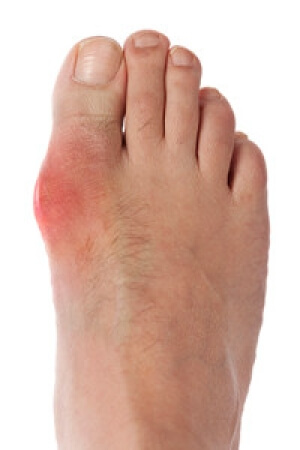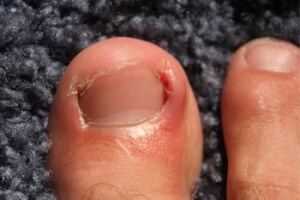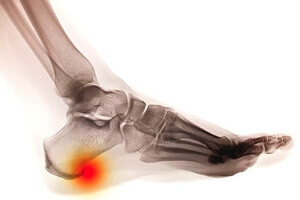
Should Children Wear Shoes Before They Begin to Walk?
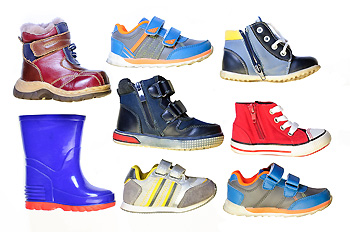 Research has shown that it is not necessary for children to wear shoes until they begin to walk. This may allow the muscles and tendons to naturally stretch while they are sitting or lying down. When walking commences, it’s beneficial to choose shoes that can protect the feet, in addition to having a textured sole that can grip the ground while walking, which may prevent falling. Shoes should always fit correctly and offer a maximum comfort level. This may include making sure there is adequate room for the toes to move about in, and should fit tightly at the heel, which may sustain stability while the child walks. Most babies are born with flat feet, and the arch will typically develop as the child grows. If you notice your child has certain foot conditions in which the toes turn in or the arch in the foot does not develop, it’s suggested that you and your child should consult with a podiatrist for proper treatment options.
Research has shown that it is not necessary for children to wear shoes until they begin to walk. This may allow the muscles and tendons to naturally stretch while they are sitting or lying down. When walking commences, it’s beneficial to choose shoes that can protect the feet, in addition to having a textured sole that can grip the ground while walking, which may prevent falling. Shoes should always fit correctly and offer a maximum comfort level. This may include making sure there is adequate room for the toes to move about in, and should fit tightly at the heel, which may sustain stability while the child walks. Most babies are born with flat feet, and the arch will typically develop as the child grows. If you notice your child has certain foot conditions in which the toes turn in or the arch in the foot does not develop, it’s suggested that you and your child should consult with a podiatrist for proper treatment options.
Making sure that your children maintain good foot health is very important as they grow. If you have any questions, contact one of our podiatrists of Apple Podiatry Group. Our doctors can provide the care you need to keep you pain-free and on your feet.
Keeping Children's Feet Healthy
Having healthy feet during childhood can help prevent medical problems later in life, namely in the back and legs. As children grow, their feet require different types of care. Here are some things to consider...
Although babies do not walk yet, it is still very important to take care of their feet.
Avoid putting tight shoes or socks on his or her feet.
Allow the baby to stretch and kick his or her feet to feel comfortable.
As a toddler, kids are now on the move and begin to develop differently. At this age, toddlers are getting a feel for walking, so don’t be alarmed if your toddler is unsteady or ‘walks funny’.
As your child gets older, it is important to teach them how to take care of their feet.
Show them proper hygiene to prevent infections such as fungus.
Be watchful for any pain or injury.
Have all injuries checked by a doctor as soon as possible.
Comfortable, protective shoes should always be worn, especially at play.
If you have any questions please feel free to contact our offices located in Arlington Fort Worth, And Flower Mound, TX . We offer the newest diagnostic and treatment technologies for all your foot and ankle needs.
How to Care for Your Child's Feet
It is never normal for a child to experience pain in his or her feet. Foot pain that lasts more than a few days and limits a child’s ability to walk should be examined by a podiatrist. Many adult foot ailments originate in childhood and may be present at birth. Common foot issues that are experienced by children are pediatric flat foot, Sever’s disease, ingrown toenails, and plantar warts.
A child’s foot grows rapidly during the first year, allowing it to reach almost half of their adult foot size. Consequently, foot specialists consider the first year to be the most crucial point in the foot development process. There are ways you can help ensure that your child’s foot develops properly. One way is to carefully look at your baby’s feet. If you notice any deformities, you should immediately seek professional care. You should also loosely cover your child’s foot, since tight coverings may prevent movement and inhibit normal development. Another tip is to change the baby’s positioning throughout the day. If your baby lies down in one spot for too long, it may put an excess amount of strain on the feet and legs.
It is best that you try not to force a child to start walking. Children will begin to walk when they are both physically and emotionally capable to do so. You should also avoid comparing your child’s walking progress with other children because the age range for independent walking may range. When your child’s feet begin to develop, you may need to change both their shoe and sock size every few months to allow room for their feet to grow.
Kids are sometimes prone to splinters, cuts, and severe injuries because they tend to walk around barefoot. This also makes them more susceptible to developing plantar warts which is a condition caused by a virus that invades the sole of the foot through breaks in the skin. These ailments can be avoided by making sure your child wears shoes in unsanitary environments. You should also wash any minor cuts or scrapes on your child’s feet. It is a myth that exposure to fresh air will heal injuries; fresh air will only expose your child’s cuts to germs.
As a parent, you should ensure that your child’s feet are developing properly and are being properly maintained. Consequently, it is important that you perform routine inspections on his or her feet to detect any injuries or deformities in their early stages. Early detection and treatment will help to ensure that your child does not develop any serious foot conditions.
Symptoms of a Heel Spur
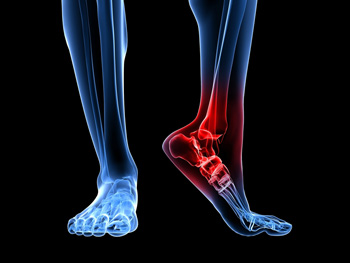 A heel spur is defined as a small bony protrusion that extends from the heel to the sole of the foot. Typical reasons for the condition to develop may be due to an injury, which may tear a portion of the heel bone, muscle, or ligament strains. Hard calcium deposits may develop under the heel, gradually forming a heel spur. People who are overweight, or those who participate in running and jumping activities may be more susceptible in developing heel spurs, in addition to those patients who wear shoes that do not fit correctly. There are several symptoms that may accompany this ailment, including pain that is felt in the heel for the majority of the day, inflammation, and tenderness. If you feel you may have a heel spur, it’s suggested to consult with a podiatrist, who can perform a proper diagnosis followed by advice on correct treatment options.
A heel spur is defined as a small bony protrusion that extends from the heel to the sole of the foot. Typical reasons for the condition to develop may be due to an injury, which may tear a portion of the heel bone, muscle, or ligament strains. Hard calcium deposits may develop under the heel, gradually forming a heel spur. People who are overweight, or those who participate in running and jumping activities may be more susceptible in developing heel spurs, in addition to those patients who wear shoes that do not fit correctly. There are several symptoms that may accompany this ailment, including pain that is felt in the heel for the majority of the day, inflammation, and tenderness. If you feel you may have a heel spur, it’s suggested to consult with a podiatrist, who can perform a proper diagnosis followed by advice on correct treatment options.
Heel spurs can be incredibly painful and sometimes may make you unable to participate in physical activities. To get medical care for your heel spurs, contact one of our podiatrists from Apple Podiatry Group. Our doctors will do everything possible to treat your condition.
Heels Spurs
Heel spurs are formed by calcium deposits on the back of the foot where the heel is. This can also be caused by small fragments of bone breaking off one section of the foot, attaching onto the back of the foot. Heel spurs can also be bone growth on the back of the foot and may grow in the direction of the arch of the foot.
Older individuals usually suffer from heel spurs and pain sometimes intensifies with age. One of the main condition's spurs are related to is plantar fasciitis.
Pain
The pain associated with spurs is often because of weight placed on the feet. When someone is walking, their entire weight is concentrated on the feet. Bone spurs then have the tendency to affect other bones and tissues around the foot. As the pain continues, the feet will become tender and sensitive over time.
Treatments
There are many ways to treat heel spurs. If one is suffering from heel spurs in conjunction with pain, there are several methods for healing. Medication, surgery, and herbal care are some options.
If you have any questions feel free to contact our offices located in Arlington Fort Worth, And Flower Mound, TX . We offer the latest in diagnostic and treatment technology to meet your needs.
How to Treat Heel Spurs
Heel spurs are calcium deposits that cause bone protrusions on the heel bone. Heel spurs are usually associated with plantar fasciitis, which occurs when the plantar fasciitis in the foot becomes inflamed. Typically, heel spurs don’t cause any symptoms. However, they can produce chronic or intermittent heel pain. Those who have had the condition often describe the irritation as a stabbing pain.
There are risk factors that may make you more likely to develop heel spurs. People who have abnormal walking gaits, run and jog on hard surfaces, are obese, or wear poorly fitting shoes are more likely to develop heel spurs.
Fortunately, there are precautions you can take to avoid developing heel spurs. One of the best ways to do this is by wearing well-fitting shoes with shock-absorbent soles. Another preventative technique is to choose running shoes if you plan on running, and walking shoes if you plan on walking. Shoes are made for different activities and it is important to research a shoe before you purchase a pair.
The pain associated with heel spurs often decreases the more you walk. However, a recurrence of pain after an extended period of rest or walking is likely to occur with this condition. Those with severe heel spur pain may opt to go the surgical route for treatment. However, more than 90% of those with the condition get better without surgical treatment. If you have a heel spur and want to know if surgery is right for you, you should go to your podiatrist and he or she will be able to conduct a pre-surgical test or exam to determine if you are an optimal candidate for surgery.
Causes and Symptoms of Gout
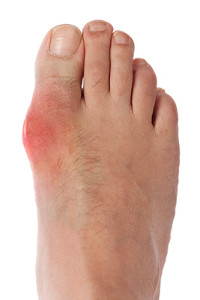 The medical condition referred to as gout is often the result of excess uric acid in the blood levels. Crystals will typically form and lodge in the joints of the big toe, and may cause severe pain and discomfort. There are several symptoms associated with this condition, and these may include swelling, redness and tenderness at the base of the big toe. The crystals generally cause inflammation and there may be extreme pain that is associated with this. Gout attacks may be the result of an inherited trait, or may occur from the foods that are ingested. Specifically, these foods may include an overindulgence of red meat, alcohol, or shellfish, and these may affect the uric acid in the blood. If you are suffering from this condition, please consult with a podiatrist as quickly as possible for correct treatment remedies.
The medical condition referred to as gout is often the result of excess uric acid in the blood levels. Crystals will typically form and lodge in the joints of the big toe, and may cause severe pain and discomfort. There are several symptoms associated with this condition, and these may include swelling, redness and tenderness at the base of the big toe. The crystals generally cause inflammation and there may be extreme pain that is associated with this. Gout attacks may be the result of an inherited trait, or may occur from the foods that are ingested. Specifically, these foods may include an overindulgence of red meat, alcohol, or shellfish, and these may affect the uric acid in the blood. If you are suffering from this condition, please consult with a podiatrist as quickly as possible for correct treatment remedies.
Gout is a painful condition that can be treated. If you are seeking treatment, contact one of our podiatrists from Apple Podiatry Group. Our doctors will treat your foot and ankle needs.
What Is Gout?
Gout is a form of arthritis that is characterized by sudden, severe attacks of pain, redness, and tenderness in the joints. The condition usually affects the joint at the base of the big toe. A gout attack can occur at any random time, such as the middle of the night while you are asleep.
Symptoms
- Intense Joint Pain - Usually around the large joint of your big toe, and it most severe within the first four to twelve hours
- Lingering Discomfort - Joint discomfort may last from a few days to a few weeks
- Inflammation and Redness -Affected joints may become swollen, tender, warm and red
- Limited Range of Motion - May experience a decrease in joint mobility
Risk Factors
- Genetics - If family members have gout, you’re more likely to have it
- Medications - Diuretic medications can raise uric acid levels
- Gender/Age - Gout is more common in men until the age of 60. It is believed that estrogen protects women until that point
- Diet - Eating red meat and shellfish increases your risk
- Alcohol - Having more than two alcoholic drinks per day increases your risk
- Obesity - Obese people are at a higher risk for gout
Prior to visiting your podiatrist to receive treatment for gout, there are a few things you should do beforehand. If you have gout you should write down your symptoms--including when they started and how often you experience them, important medical information you may have, and any questions you may have. Writing down these three things will help your podiatrist in assessing your specific situation so that he or she may provide the best route of treatment for you.
If you have any questions, please feel free to contact our offices located in Arlington Fort Worth, And Flower Mound, TX . We offer the newest diagnostic and treatment technologies for all your foot care needs.
Gout
Gout is a form of arthritis that is caused by a buildup of uric acid crystals in the joints. This considered to be one of the most frequently recorded medical illnesses throughout history. Gout occurrences in the US have risen within the past twenty years and the condition now affects 8.3 million people which is 4% of all Americans. Researchers have found that gout affects men more than women and African-American men more than white men.
Symptoms of gout are warmth, swelling, discoloration, and tenderness in the affected joint area. The small joint on the big toe is the most common place for a gout attack to occur.
People who are obese, gain weight excessively, drink alcohol heavily, have high blood pressure, or have abnormal kidney function are more likely to develop gout. Furthermore, certain drugs and diseases are likely to increase levels of uric acid in the joints which eventually leads to gout. You are also more likely to develop gout if you eat a lot of meat and fish.
Many who experience gout attacks will experience repeated attacks over the years. Some people who have gout symptoms, may never have them again, but others may experience them several times a year. If you have gout symptoms throughout the year, you may have recurrent gout. Those who have gout should also be careful about their urate crystals collecting in their urinary tract, because this may lead to kidney stones.
Diagnosis for gout is done by checking the level of uric acid in the joints and blood. Your podiatrist may also prescribe medicine to reduce uric acid buildup in the blood, which will help prevent any gout attacks.
To treat gout, your podiatrist may also prescribe you Anti-inflammatory medication (NSAIDs) which will relieve the pain and swelling of a gout episode and it can also shorten a gout attack. Maintaining a healthy diet is also a proven method to prevent gout attacks.
What are the Causes of an Ingrown Toenail?
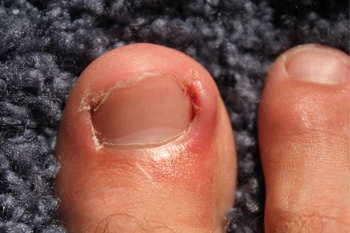 A medical condition that is known as onychocryptosis, also referred to as an ingrown toenail, can cause uncomfortable pain and soreness. This is a condition that generally develops when the corner of the toenail cuts into the skin surrounding the nail. There are several causes for this ailment to occur, including wearing shoes that are pointed in the toe area, frequently wearing high heels, or choosing to wear shoes that are too tight. Additionally, if the toenails are trimmed improperly, this may also cause a toenail to become ingrown. It’s important to have this condition treated promptly, and this may possibly avoid a fungal infection from developing. If you have developed this condition, you are most likely aware of the noticeable symptoms. These may include a liquid that drains from the affected area, increased pain and swelling, and a possible fever if the infection is severe. If you have an ingrown toenail, it is strongly suggested that you speak with a podiatrist as quickly as possible to discuss treatment options.
A medical condition that is known as onychocryptosis, also referred to as an ingrown toenail, can cause uncomfortable pain and soreness. This is a condition that generally develops when the corner of the toenail cuts into the skin surrounding the nail. There are several causes for this ailment to occur, including wearing shoes that are pointed in the toe area, frequently wearing high heels, or choosing to wear shoes that are too tight. Additionally, if the toenails are trimmed improperly, this may also cause a toenail to become ingrown. It’s important to have this condition treated promptly, and this may possibly avoid a fungal infection from developing. If you have developed this condition, you are most likely aware of the noticeable symptoms. These may include a liquid that drains from the affected area, increased pain and swelling, and a possible fever if the infection is severe. If you have an ingrown toenail, it is strongly suggested that you speak with a podiatrist as quickly as possible to discuss treatment options.
Ingrown toenails can become painful if they are not treated properly. For more information about ingrown toenails, contact one of our podiatrists of Apple Podiatry Group. Our doctors can provide the care you need to keep you pain-free and on your feet.
Ingrown Toenails
Ingrown toenails occur when a toenail grows sideways into the bed of the nail, causing pain, swelling, and possibly infection.
Causes
- Bacterial infections
- Improper nail cutting such as cutting it too short or not straight across
- Trauma to the toe, such as stubbing, which causes the nail to grow back irregularly
- Ill-fitting shoes that bunch the toes too close together
- Genetic predisposition
Prevention
Because ingrown toenails are not something found outside of shoe-wearing cultures, going barefoot as often as possible will decrease the likeliness of developing ingrown toenails. Wearing proper fitting shoes and using proper cutting techniques will also help decrease your risk of developing ingrown toenails.
Treatment
Ingrown toenails are a very treatable foot condition. In minor cases, soaking the affected area in salt or antibacterial soaps will not only help with the ingrown nail itself, but also help prevent any infections from occurring. In more severe cases, surgery is an option. In either case, speaking to your podiatrist about this condition will help you get a better understanding of specific treatment options that are right for you.
If you have any questions please feel free to contact our offices located in Arlington Fort Worth, And Flower Mound, TX . We offer the newest diagnostic and treatment technologies for all your foot and ankle needs.
Ingrown Toenails
An ingrown toenail is a nail that has curved downward and grown into the skin. This typically occurs at either the nail borders or the sides of the nail. As a result, pain, redness, swelling, and warmth may occur in the toe. If a break in the skin forms due to the ingrown nail, bacteria may enter and cause an infection in the area; this is typically characterized by a foul odor and drainage.
Ingrown toenails have multiple reasons for developing. In many instances, the condition is a result of genetics and is inherited. The most common cause, however, is improper trimming; cutting the toenails too short forces the skin beside the nail to fold over. An ingrown toenail can also develop due to trauma, such as stubbing the toe, having an object fall on the toe, or participating in activities that involve repeated kicking or running. Wearing shoes that are too tight or too short can also cause ingrown toenails.
Treatment for an ingrown toenail varies between patients and the severity of the condition. In most cases, it is best to see your podiatrist for thorough and proper treatment. After examining your toe, your podiatrist may prescribe oral antibiotics to clear the infection if one is present. Surgical removal of either a portion of the nail or the entire nail may also be considered. In some cases, complete removal or destruction of the nail root may be required. Most patients who undergo nail surgery experience minimal pain afterward and can return to normal activity the following day.
Ingrown toenails can be prevented with proper nail trimming and by avoiding improper-fitting shoes. When cutting the toenails, be sure that you are cutting in a straight line and avoid cutting them too short. Shoes should not be too short or tight in the toe box.
Causes of Heel Spurs
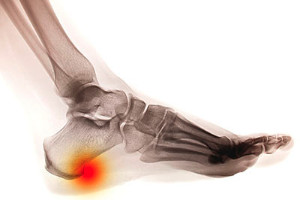 If you are experiencing a sharp pain in the heel of your foot while standing after a night’s sleep, you may have what is referred to as a heel spur. It is generally defined as a hooked or pointy portion of bone that grows outward into the heel. Additional symptoms of this condition would be swelling and tenderness in the heel and surrounding area, a small, hard protrusion under the heel, or a constant dull ache for the majority of the day. A proper diagnosis typically includes having an X-ray performed and this will aid the doctor in viewing the protrusion. There are known to be several causes why heel spurs may develop. These may include participating in running and jumping activities, age progression, or a possible injury to the heel. Research has shown partial relief may be obtained by wearing cushioned shoes that provide adequate support for the heel, reducing pressure on the feet by getting plenty of rest, or possibly taking anti-inflammatory medication. If you feel you have a heel spur, it is suggested to speak with a podiatrist, so the correct treatment can begin.
If you are experiencing a sharp pain in the heel of your foot while standing after a night’s sleep, you may have what is referred to as a heel spur. It is generally defined as a hooked or pointy portion of bone that grows outward into the heel. Additional symptoms of this condition would be swelling and tenderness in the heel and surrounding area, a small, hard protrusion under the heel, or a constant dull ache for the majority of the day. A proper diagnosis typically includes having an X-ray performed and this will aid the doctor in viewing the protrusion. There are known to be several causes why heel spurs may develop. These may include participating in running and jumping activities, age progression, or a possible injury to the heel. Research has shown partial relief may be obtained by wearing cushioned shoes that provide adequate support for the heel, reducing pressure on the feet by getting plenty of rest, or possibly taking anti-inflammatory medication. If you feel you have a heel spur, it is suggested to speak with a podiatrist, so the correct treatment can begin.
Heel spurs can be incredibly painful and sometimes may make you unable to participate in physical activities. To get medical care for your heel spurs, contact one of our podiatrists from Apple Podiatry Group. Our doctors will do everything possible to treat your condition.
Heels Spurs
Heel spurs are formed by calcium deposits on the back of the foot where the heel is. This can also be caused by small fragments of bone breaking off one section of the foot, attaching onto the back of the foot. Heel spurs can also be bone growth on the back of the foot and may grow in the direction of the arch of the foot.
Older individuals usually suffer from heel spurs and pain sometimes intensifies with age. One of the main condition's spurs are related to is plantar fasciitis.
Pain
The pain associated with spurs is often because of weight placed on the feet. When someone is walking, their entire weight is concentrated on the feet. Bone spurs then have the tendency to affect other bones and tissues around the foot. As the pain continues, the feet will become tender and sensitive over time.
Treatments
There are many ways to treat heel spurs. If one is suffering from heel spurs in conjunction with pain, there are several methods for healing. Medication, surgery, and herbal care are some options.
If you have any questions feel free to contact our offices located in Arlington Fort Worth, And Flower Mound, TX . We offer the latest in diagnostic and treatment technology to meet your needs.
